The Unknown Life of Poe: Edgar Allan Poe's Domestic Pets
Edgar Allan Poe's Animal Companions
Imagine Edgar Allan Poe's study room, where a middle-aged man with raven black hair and intelligent brown eyes leans on an ancient oak desk under the soothing glow of a lamp.
On his shoulder, the cat perches, looking like a literary agent reviewing her literary client's new piece. Occasionally, the cat purrs or meows, and as Edgar strokes the pen, her bright eyes reflect the inspiration that fuels his creativity.
Nevertheless, Poe's residence does not solely consist of cats. Toby, a loyal dog, stands by Poe's side and provides much-needed companionship in his otherwise lonely existence.
In Baltimore, Edgar and the cat live together in the same house.
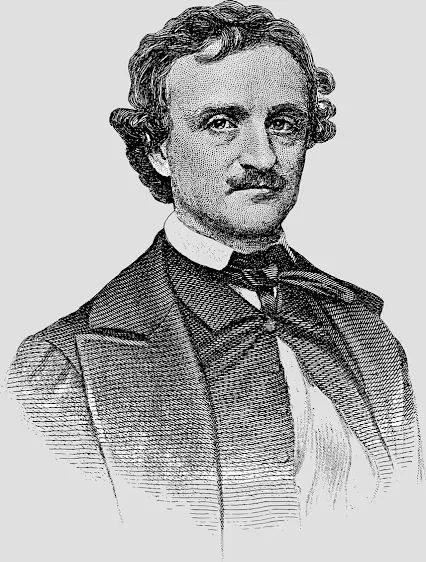 |
| Edgar Allan Poe is famous for his fantastical tales, but only a few people know that he had domestic pets that accompanied him throughout his life |
Poe had the opportunity to interact with multiple animals throughout his life, starting when he was a child.
The atmosphere in Poe's childhood home was enriched by the joyful songs of canaries that brightened the boy's spirit after the loss of his parents.
While attending a private school in misty England, Poe found amusement in watching small animals such as rabbits and guinea pigs scurrying about.
While he was a teenager, Poe had a pet parakeet in his dormitory room that would imitate amusing remarks while he composed his first poems.
Each morning at West Point, a horse greets Edgar with a loud neigh.
Poe's love for animals extends beyond his home. The pages of his literary works are filled with creatures from the animal kingdoms of all shapes and sizes.
Edgar Allan Poe's domestic pets
While Edgar Allan Poe is famous for his tales of terror and tension, his affection for animals is not as well-known.
It is unfortunate, because Poe's writings contain numerous references to creatures of the animal kingdom such as ravens, cats, and snakes.
Let's take a closer look at this topic.
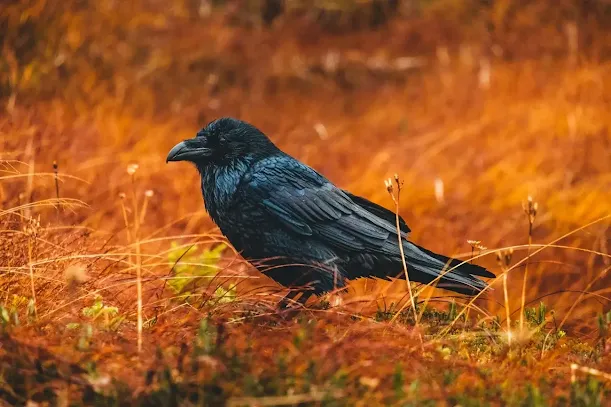 |
| Ravens were visible basically everywhere during Poe's lifetime due to the prevalence of agriculture as the main industry |
Discussing Poe's connection with the natural world would only be thorough by mentioning his renowned piece, *The Raven*.
This masterpiece features the main bird repeating the word "Nevermore" endlessly.
The choice of Raven as the protagonist is not so strange when we realize that in Edgar Allan Poe's time, you would see ravens all over the place because farming was everywhere.
Ravens would gather grains from fields and scavenge leftovers from livestock like pigs and chickens.
It wasn't uncommon to see them wandering around farms and fields, looking for easy meals.
These birds basically depend on what farmers are growing.
Poe likely noticed them a lot as a child, which may explain why he wrote a poem about them later in life.
 |
| Throughout the 19th century, Americans who transitioned from childhood on farms to adulthood in cities were consistently surrounded by the presence of animals |
Edgar Allan Poe's cats
Even though details differ in various sources, Poe's love for animals, particularly his loyal dog and beloved cat, is well-documented.
Poe's peers also provided insights on this issue in their testimonies.
To offer a comprehensive overview of Poe's domestic animals, I also referred to these testimonies while composing this article.
Cats
All his life, Poe has consistently harbored a deep fondness for cats.
The enigmatic yet caring demeanor of cats probably reflected Poe's own personality, leading to a special bond with them.
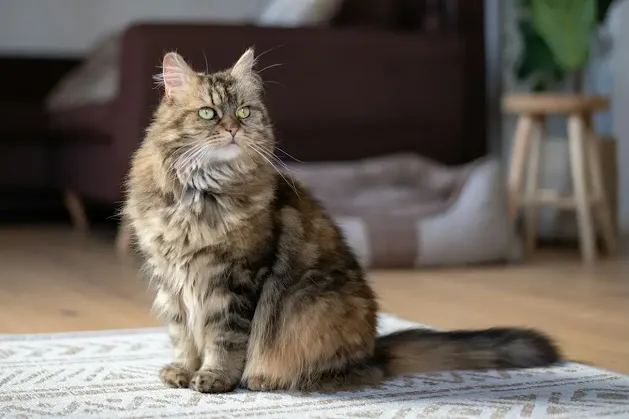 |
| While in Baltimore, the Edgar Allan Poe household was further enriched by the presence of a domestic cat |
Edgar Allan Poe's love for cats started in Baltimore, where he lived with his aunt Maria Clemm and his daughter Virginia Clemm, who would eventually become his wife.
While there, Poe cherished a cat named Catterina (also known as Caterina).
Poe's correspondence with family and friends from this time is also filled with sporadic mentions of Caterina.
Tortoiseshell cats do not belong to a specific breed; instead, they are identified by their unique coat pattern that can be found in different breeds, such as domestic short-haired cats.
Many people believe that tortoiseshell cats exhibit unique personality traits such as being determined, self-reliant, and sometimes sarcastic. Even though there is no scientific evidence to support these claims, numerous tortoiseshell cat owners attest to these claims.
The dogs of Edgar Allan Poe
According to testimonies of contemporaries, Poe walked extensively around Baltimore with his dog. Moreover, in the correspondence, Poe praised his dog inteligence and sometimes emphasized the dog's positive effect on his mental well-being.
Edgar Allan Poe did not mention the breed of his dog, but it is commonly thought that it was a crossbreed dog, not a purebred. Some reports suggest that it was a Newfoundland, a type of dog known for its remarkable skill in swimming.
Newfoundland dogs are excellent swimmers due to their swimming skills and waterproof coats. These dogs, originating from Newfoundland, Canada, were raised and trained by fishermen to pull fishing nets and rescue people from icy waters, thanks to which they earned the moniker 'lifeguards of the sea.'
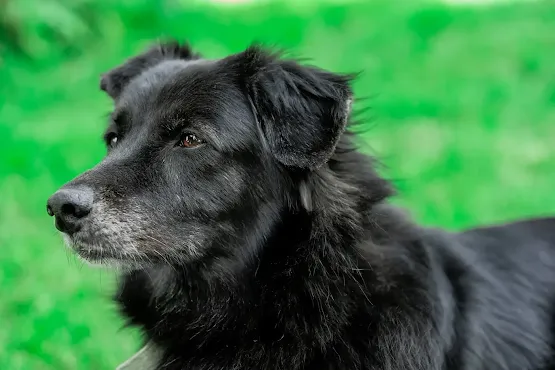 |
| According to some sources, Edgar Allan Poe had a loyal dog named Toby |
Edgar Allan Poe did not mention the breed of his dog, but it is commonly thought that it was a crossbreed dog, not a purebred. Some reports suggest that it was a Newfoundland, a type of dog known for its remarkable skill in swimming.
Newfoundland dogs are excellent swimmers due to their swimming skills and waterproof coats. These dogs, originating from Newfoundland, Canada, were raised and trained by fishermen to pull fishing nets and rescue people from icy waters, thanks to which they earned the moniker 'lifeguards of the sea.'
It's important to note that these gentle giants have saved numerous lives, and their bravery and commitment have been demonstrated in multiple cases where human life was in danger. Newfoundlands are still highly valued for their roles as search and rescue dogs even today.
Thomas Holley Chivers, a friend of Poe, later described a touching moment when Poe's dog grieved at Poe's grave for a long time after Poe had passed away.
Beyond cats and dogs
During the 1800s, canaries were the predominant caged bird in American households. The cheerful songs of canaries certainly provided a delightful distraction from the occasionally dreary financial and family situation of American families at that time.
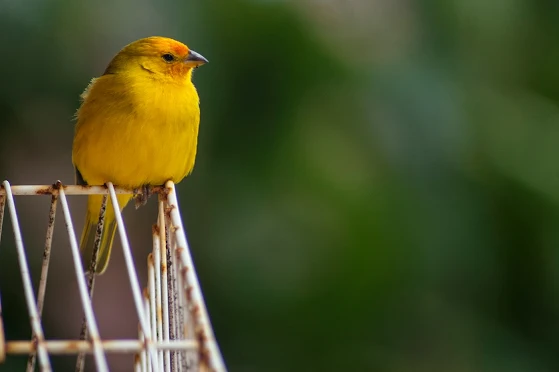 |
| Having canaries in the home was highly fashionable in 19th-century America, and Edgar Allan Poe was known to have owned one |
Canary birds, native to the Canary Islands near Africa's northwest coast showcase a wide range of melodic songs and chirps.
Their syrinx, located at the base of the trachea, is a specialized vocal organ that produces their song with a variety of pitches and tones.
Selective breeding has been used to create distinctive singing breeds like the Waterslager, Roller, and American Singer further enhancing their singing ability.
Horses
Edgar Allan Poe's love for horses is not as well documented as his affection for cats or dogs. Yet, historical records suggest that Poe had many contacts with horses. While serving in the military at West Point, Poe gained the skills to handle and ride horses. Besides, since Poe existed before the invention of cars, he likely relied on horse transportation to move around the country.Poe's personal life was characterized by unstable finances and frequent relocations, possibly hindering his ability to own a horse. Poe likely only lends it temporarily for his trips or pays for chauffeur services. Being a writer and editor, Poe often found himself in social circles where horses, especially high-priced ones, were the main subject of discussion. In his era, the horse was viewed as a representation of social status, much like how a car is perceived in modern times.
Morgan Horse
Many horse breeds, such as the Morgan, were well-liked in the United States during Poe lifetime. The Morgan horse is named after Vermont professor Justin Morgan.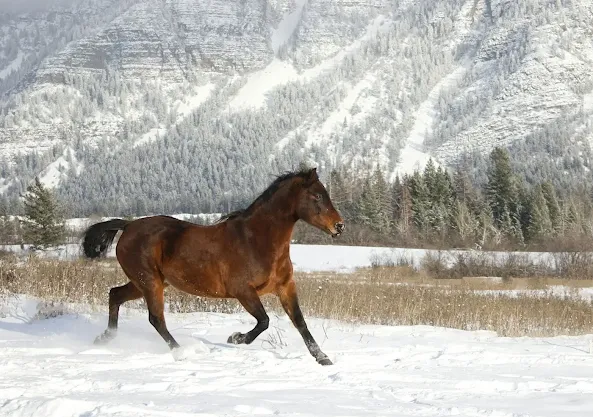 |
| The beauty of American horse breeds such as the Morgan horse is indisputable |
Their ability to adapt enabled them to work in fields, transport carriages, and even be used as cavalry horses in the Civil War.
Morgan horses are known for their graceful yet strong build, standing at 14 to 15 hands tall (56 to 60 inches at the shoulder) and their distinctive, confident head carriage. Their strong hindquarters, well-arched necks, and muscular backs enable them to move swiftly. Morgan horses are recognized for their expansive strides, providing a pleasant and effortless riding experience. The Morgan breed was granted official recognition in 1909 with the establishment of the Morgan Horse Club (now the American Morgan Horse Association), and continues to be highly esteemed in contemporary USA.
American Saddlebred
The American Saddlebred, often referred to as the 'Made in America Horse', first emerged in Kentucky in the early 1800s. The American Saddlebred became popular quickly due to its impressive gait and pleasant temperament. With the decline in demand for elegant carriage horses as automobiles became popular, the breed shifted its focus to the show ring, where it performs admirably in saddle seat and fine harness competitions.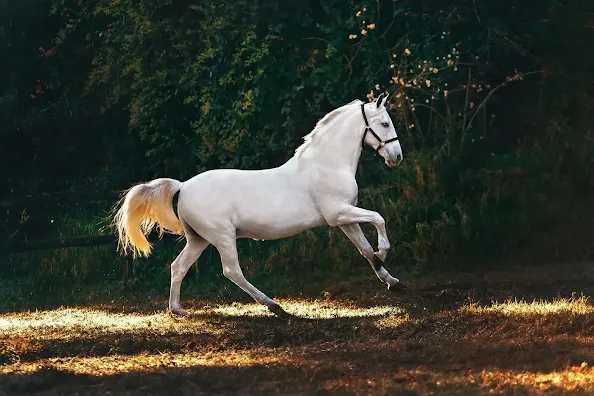 |
| Edgar Allan Poe encountered several American native horse breeds during his lifetime, such as the elegant American Saddlebred |
Distinctive characteristics of American saddlebreds include elongated, curved necks, prominent withers, strong shoulders, and elevated tails. American Saddlebred naturally hold his heads high and possess three distinct gaits: walking, trotting, and cantering.
Still today, American Saddlebreds continue to showcase their agility, grace, and elegance in various events such as saddle seat equitation, pleasure driving, and fine harness competitions. Established in 1891, the goal of the American Saddlebred Registry is to safeguard and advance the breed. American Saddlebred is a vital part of the history and culture of United States of America.
Animals in Poe's Literary Works
During his literary career, Edgar Allan Poe often incorporated animals into his books. Both 'The Raven' and 'The Black Cat' are famous illustrations of this.Animals are essential in advancing the storyline in his less popular works like "The Gold-Bug" and "The Mystery in the Rue Morgue." The scarab beetle plays a crucial role in unraveling the enigma of Captain Kidd's hidden riches in 'The Gold Bug,' while orangutan is the main character in 'The Mystery in the Rue Morgue.'
 |
| Edgar Allan Poe was one of the first authors to include orangutans as characters in his stories |
Poe definitely had a fascination with monkeys, even though he likely never personaly interact with them as with dogs and cats. Poe's portrayal of monkeys may have been inspired by encounters in traveling circuses during the 1800s in the United States.
The many animals that take part in Poe's life show how animals played a significant role in enhancing his life and inspiring his art. Additionally, Poe's relationship with animals provides insight into his more gentle and personal side.


Comments
Post a Comment